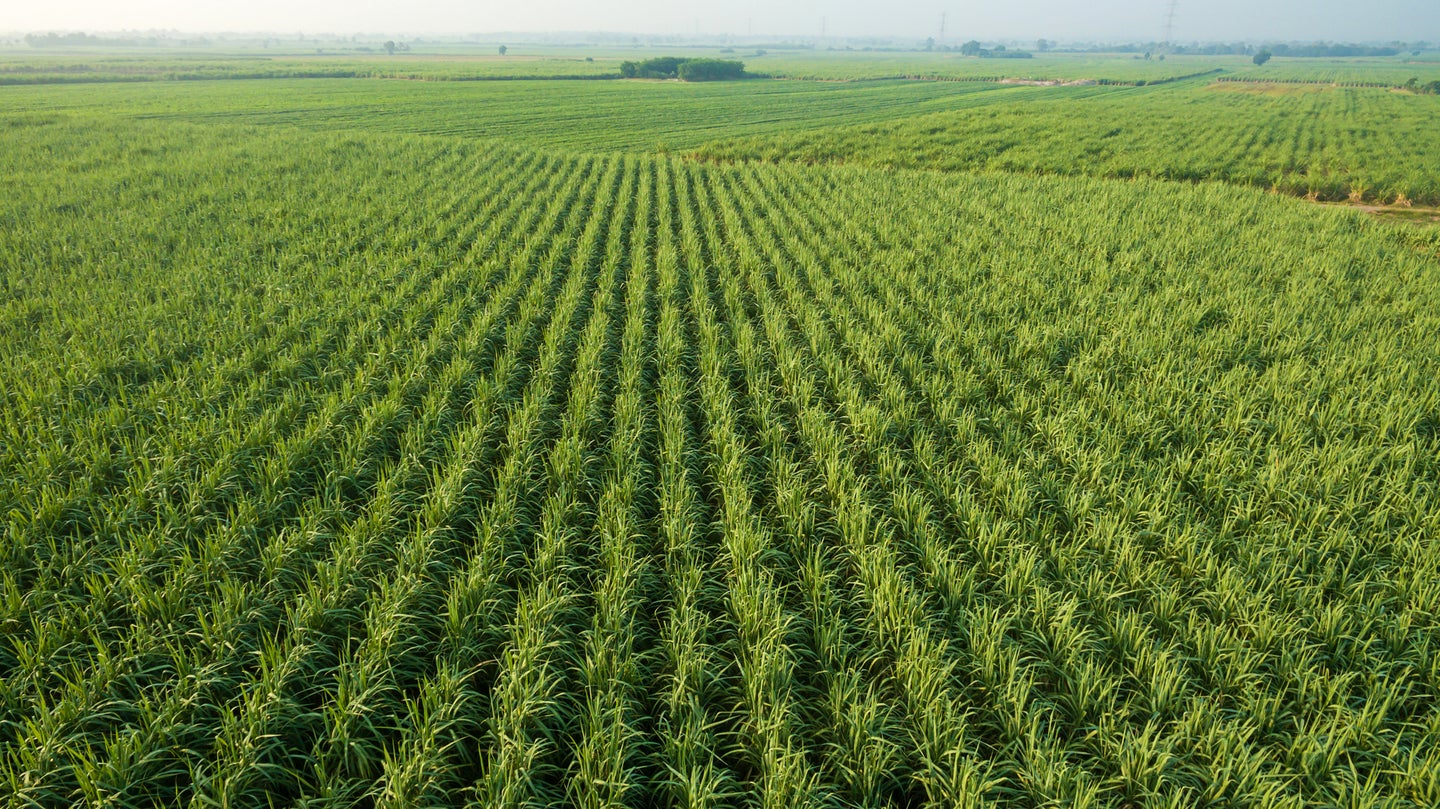How sprinkling volcanic rocks on farmland could capture carbon dioxide
A simple chemical reaction could help lock up gigatons of greenhouse gases.

Capturing carbon dioxide from the atmosphere and storing it, also known as carbon sequestration, is one of many methods to mitigate climate change. Carbon dioxide is usually stored in underground geologic formations or biologic forms like forests, soils, or oceans through various methods. In a new research, scientists found that applying basalt dust in croplands can effectively sequester atmospheric carbon dioxide at the gigaton scale.
When silicate rocks like basalt get in contact with rainwater, the chemical process of weathering occurs, which removes carbon dioxide from the atmosphere and converts it into products that are transported and then stored in the ocean. Natural weathering can be accelerated by grinding silicate rocks into fine particles and applying them to the soil, thereby increasing the surface area and absorbing more carbon dioxide. This process is called enhanced rock weathering (ERW).
[Related: Blue carbon is a natural climate solution with big potential.]
“These particles undergo chemical reactions with CO2, converting it into bicarbonate ions or stable mineral carbonates,” says Shuang Zhang, assistant professor in the Department of Oceanography at Texas A&M University. “This process essentially locks away the carbon, effectively removing it from the atmosphere for an extended period.”
According to a study published recently in the journal Earth’s Future, applying 10 tons of basalt dust per hectare on almost a thousand agricultural sites around the globe can sequester 64 gigatons of carbon dioxide over a 75-year period. If this application is extended to all croplands, over 215 gigatons may be sequestered in the same period.
“The numbers point to ERW being a compelling strategy to achieve large-scale carbon sequestration,” says Zhang, who was involved in the study. He adds that it also has “several distinct advantages over alternative carbon capture strategies like afforestation or bioenergy with carbon capture and storage (BECCS).”
Afforestation, or introducing trees in unforested regions, is a greenhouse gas (GHG) mitigation strategy, but it might not be effective in every ecosystem. For instance, the carbon sequestration of afforestation is less effective than grasses in tropical savannas, and it may have limited potential in drylands.
Meanwhile, the capacity of BECCS—which extracts bioenergy from biomass and stores its carbon dioxide emissions in underground geologic formations to prevent release—may eventually decrease because of the effects of climate change on crop yields and biomass feedstocks.
In comparison, ERW is compatible with existing farmland and is readily scalable by utilizing pre-existing agricultural infrastructure, says Zhang. The method also comes with ecological co-benefits. He adds that ERW can reduce the carbon footprint associated with fertilizer production, mitigate nitrous oxide emissions from the soil, improve soil pH levels and nutrient absorption, and increase crop yields as a result.
“This twin capacity to ameliorate soil health while capturing carbon provides unique opportunities for agricultural modernization in economically developing nations, thereby extending its transformative potential,” says Zhang. However, some barriers stand in the way of large-scale deployment of ERW.
There are insufficient frameworks for the monitoring, reporting, and verification (MRV) of carbon sequestration activities, says Zhang. For instance, “the impact of ERW byproducts on river systems and the associated carbon leakage has not been fully investigated, a gap that must be addressed to solidify financial incentives for ERW,” he adds.
[Related: The truth about carbon capture technology.]
The inappropriate handling of finely ground basalt during the application can result in airborne particulate emissions, thus posing a risk to local air quality. There is also potential for nutrient accumulation in water systems as weathered minerals from ERW flow downstream, which could exacerbate issues like eutrophication. Moreover, developing countries often lack the necessary infrastructure for large-scale processing and deployment of basalt, says Zhang. Addressing these issues is crucial before implementing ERW more widely.
Zhang suggests several ways to navigate these barriers. When it comes to research, regulatory standards for MRV can be crafted by the scientific community and ratified by relevant government agencies. Public investment can also focus on upgrading infrastructure and advancing agricultural systems, while the private sector can invest in technologies that enhance the efficiency and cost-effectiveness of ERW.
Overall, exploring the potential of ERW remains worthwhile because its effectiveness as a carbon sequestration method may be resilient to future climatic changes. “Even under high emissions scenarios, the impact on carbon dioxide removal (CDR) rates is minimal, with an approximate increase of only two percent,” says Zhang. “This suggests that ERW would remain an effective strategy for carbon sequestration even as the planet warms.”